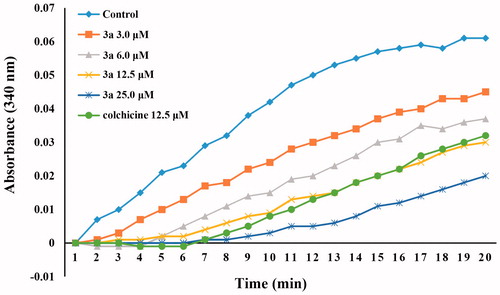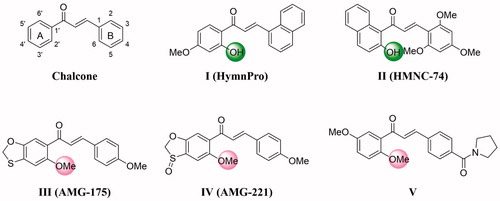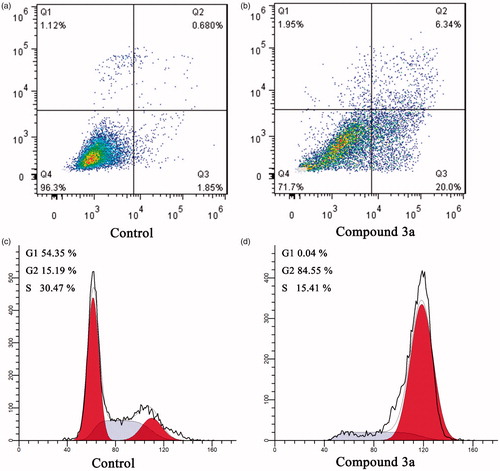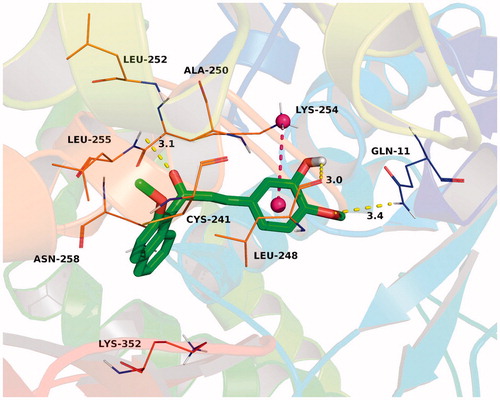Figures & data
Scheme 1. Scheme of synthesis of target compounds 3a–3t. Reagents and conditions: (a) Cs2CO3, acetone, r.t. 12 h; (b) 50% KOH (aq), MeOH, 0 °C, 0.5 h to r.t., 24 h.
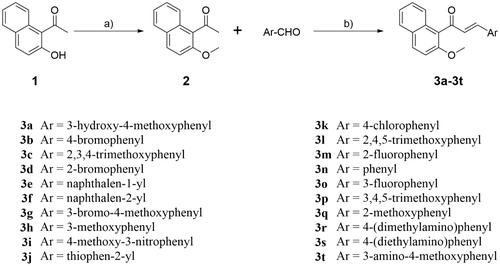
Table 1. Anticancer activity of compounds 3a–3t against MCF-7 cell line.
Table 2. Cytotoxic activity (IC50, µM) of selected compound 3a and cisplatin against human embryonic kidney (HEK293) cell line.
Figure 3. Tubulin polymerisation inhibitory activity of compound 3a (3.0 μM, 6.0 μM, 12.5 μM, and 25.0 μM) and colchicine (12.5 μM).
